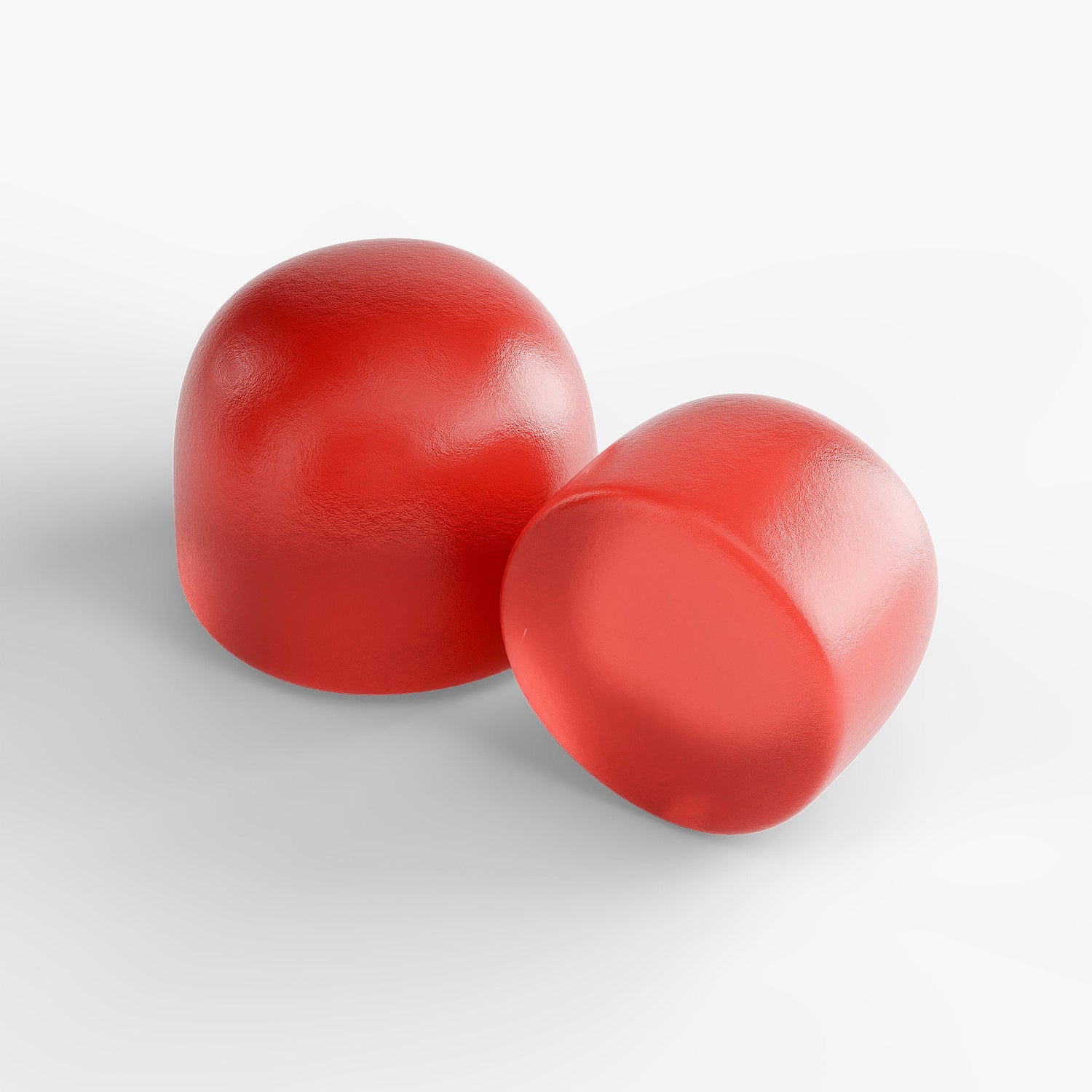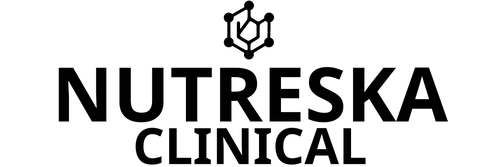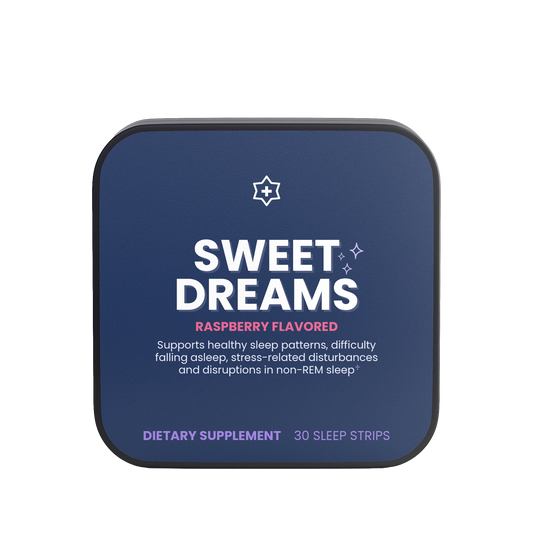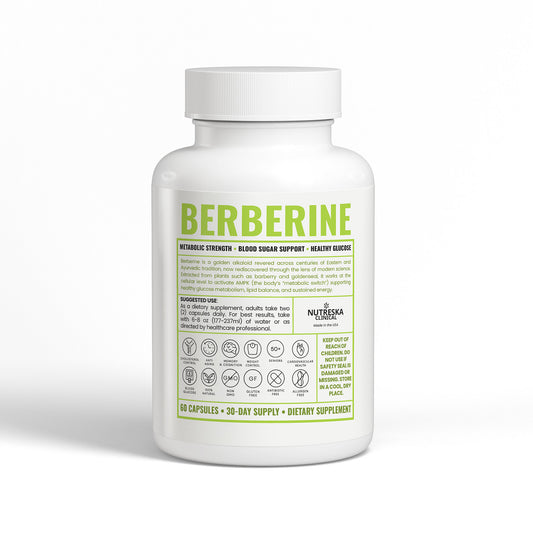NAD⁺ + Resveratrol: The Definitive Synergy with Trust & Science
- Resveratrol doesn’t just “activate”; it helps build the NAD⁺ pool via NMNAT1 and redox shifts1,3,12.
- Preclinical data show combo > NAD⁺ alone for tissue NAD⁺ and mitochondrial efficiency26,27.
- Formulation keys: bioavailability, ratio, non-competing cofactors, quality verification31,34,43.
- Human safety looks good for individual components; combo trials limited—dose prudently6,32,33.
NAD⁺ in Aging & Metabolism — And Why “Alone” Isn’t Enough
NAD⁺ powers redox reactions, PARP-mediated DNA repair, and sirtuin signaling that govern mitochondrial function and stress resilience1,11,13,20. With age, NAD⁺ declines across tissues, correlating with metabolic slowdown and impaired cellular repair1,4,5,18,28.
Beyond a Sirtuin Switch: Resveratrol as a NAD⁺ Multiplier
Resveratrol helps build and use the NAD⁺ pool more effectively by improving upstream synthesis and mitochondrial redox balance3,12,29.
NMNAT1 Upregulation — Build More NAD⁺
Reports indicate resveratrol can upregulate NMNAT1 (NMN → NAD⁺), yielding multi-fold intracellular NAD⁺ increases in cellular models12,1. Targeting synthesis complements precursor intake.
In-Vivo Synergy — Make It Count in Tissues
Animal data indicate the combo can raise tissue NAD⁺ in high-demand organs (e.g., heart, skeletal muscle) beyond precursor alone26,27.
Redox & Sirtuins — Use NAD⁺ Better
Resveratrol supports mitochondrial complex I, shifting NADH → NAD⁺ and elevating the NAD⁺/NADH ratio for SIRT1/SIRT3 throughput3,7,2.
3. Side-by-Side: NAD⁺ Alone vs NAD⁺ + Resveratrol
| Metric | NAD⁺ Alone | NAD⁺ + Resveratrol |
|---|---|---|
| Tissue NAD⁺ Gain | Moderate, organ-dependent14,8 | Amplified in key tissues26,27 |
| Sirtuin Activation | Limited by substrate2,24 | Maximized via substrate + enzyme support3,12 |
| Mitochondrial Efficiency | Some improvement8 | Stronger gains via redox optimization3,7 |
| Downstream Benefits | DNA repair, metabolic support11,7 | Enhanced: autophagy, vascular, anti-inflammatory21,23 |
4. Human Data, Safety & Trust
Trials with NAD⁺ precursors show significant NAD⁺ increases and generally good tolerability6,14,15,16. Resveratrol human studies report acceptable safety at controlled doses with bioavailability challenges that smart formulation can address31,32,33,36.
Shop Nutreska NAD⁺ + Resveratrol →
5. Formulation Strategy (What Actually Wins)
- Choose a bioavailable NAD⁺ precursor (NR, NMN, or validated analog)14,6.
- Use stabilized, high-quality resveratrol (micronized / encapsulated / delivery-enhanced)31,36.
- Balance the ratio to drive synthesis without antagonizing NAD pathways1,11.
- Pick non-competing cofactors (e.g., select polyphenols) to support, not siphon35,44.
- Publish COAs & PK data—real quality earns trust (and rankings)32,36.
References
- Covarrubias et al., 2021 — NAD⁺ metabolism & roles (Nat Rev Mol Cell Biol)
- Wu et al., 2022 — The sirtuin family in health & disease
- Desquiret-Dumas et al., 2013 — Resveratrol stimulates complex I, ↑ mitochondrial NAD⁺
- Poljsak et al., 2020 — Why NAD⁺ declines with aging
- Chini et al., 2018 — CD38/NADase as an emerging target
- Berven et al., 2023 — NRPT safety RCT, human NAD⁺ ↑
- Murata et al., 2019 — PARP1 consumes NAD⁺ after DNA damage
- Elhassan et al., 2019 — NR augments aged human muscle transcriptome
- Rajman et al., 2018 — Therapeutic potential of NAD-boosters
- Camacho-Pereira et al., 2016 — CD38 drives age-related NAD decline
- Hurtado-Bagès et al., 2020 — PARP1 & impact on NAD⁺ metabolism
- Gueguen et al., 2015 — Resveratrol binds complex I (mechanistic)
- Kincaid & Sauve, 2020 — NAD metabolism in aging & cancer
- Trammell et al., 2016 — Oral NR raises human blood NAD⁺
- Vreones et al., 2022 — Oral NR ↑ neuronal-EV NAD⁺
- Damgaard et al., 2023 — NR effects: human evidence synthesis
- Schultz Sinclair, 2016 — “Why NAD⁺ declines: it’s destroyed” (CD38, PARP)
- Yusri et al., 2025 — Role of NAD⁺ in aging & disorders (review)
- Tarragó et al., 2018 — CD38 inhibitor ↑ tissue NAD⁺
- Gibril et al., 2024 — Sirtuins in skeletal muscle (review)
- Ungvari et al., 2011 — Mitochondrial protection by resveratrol
- Angeletti et al., 2022 — SARM1 is a prominent NAD(P)ase
- Inchingolo et al., 2022 — Resveratrol/quercetin effects (review)
- Wang et al., 2018 — Sirtuins overview & modulators
- Imai Guarente, 2014 — NAD⁺ & sirtuins in aging & disease
- Baur et al., 2006 — Resveratrol improves health/survival (Nature)
- Lagouge et al., 2006 — Resveratrol & mitochondrial function (Cell)
- Khaidizar et al., 2021 — NAMPT as key NAD salvage enzyme (declines with age)
- Ramírez-Garza et al., 2018 — Resveratrol human health effects
- Mehmel et al., 2020 — Nicotinamide riboside: current state
- Kapetanovic et al., 2011 — Resveratrol vs pterostilbene PK/bioavailability
- Sergides et al., 2016 — 500 mg resveratrol PK & safety
- Brown et al., 2024 — Systematic review of resveratrol clinical trials
- Smoliga et al., 2014 — Enhancing resveratrol delivery in humans
- Zhao et al., 2017 — Polyphenols incl. quercetin & resveratrol (review)
- Vaz-da-Silva et al., 2008 — Effect of food on trans-resveratrol PK
- Zhao et al., 2025 — CD38 in aging biology (review)
- Kincaid Sauve, 2020 — (duplicate topic) NAD in aging/cancer
- Verdin, 2015 — NAD⁺ in aging, metabolism & neurodegeneration (Science)
- Navas Carnero, 2022 — NAD metabolism in disease (review)
- Waller et al., 2022 — SARM1 in axon degeneration (review)
- Mitchell et al., 2018 — Nicotinamide & healthspan in mice
- Freeberg et al., 2022 — NR for hypertension endpoints (trial design)
- Chan et al., 2019 — Resveratrol vs pterostilbene overview
- Liu et al., 2024 — Pterostilbene bioavailability (review)
- Dadge et al., 2023 — LC-MS/MS PK method (quercetin/resveratrol biomarkers)
- Mehmel et al., 2020 — (duplicate entry ok for breadth) NR state of research
- Chini et al., 2020 — CD38 induction with aging (immune)
- Yi et al., 2023 — NMN efficacy & safety review (humans)
- Yoshino et al., 2021 — NMN increases insulin sensitivity (Science)
- Brenner, 2021 — Comment on NMN trial randomization (Science)
- Okabe et al., 2022 — Oral NMN safe & raises NAD⁺ (trial)
- ClinicalTrials.gov — NRPT repeated dose NAD⁺ elevation
- Liu et al., 2020 — Pterostilbene vs resveratrol bioactivity/bioavailability
- Lee Shin, 2019 — Sirtuin signaling in senescence










